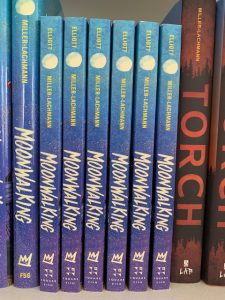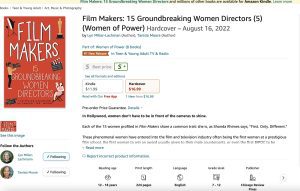Some Thoughts on the Publishing Crisis, Part II: Causes
Many thanks to those who read the first installment of this series and encouraged me to move forward with it (not that I wasn’t going to anyway, but support helps). In this post, I’ll discuss what I see are the major factors that have led to the recent decline in book sales, contraction at publishing houses, and extended waits for agent queries and submissions to editors to receive responses that more often aren’t what we want to hear. While this part may sound pessimistic, it isn’t, because knowing the “why” makes it easier to counteract these factors and reach creative solutions.
As I see it, the causes, at least for children’s publishing, are fourfold: demographic, economic, technological, and political.
I’ll start with the demographic first — the long-term effects of the Great Recession that began in 2008. Typically, economic collapses in industrialized countries lead to a sharp decline in the birth rate. People don’t have children if they don’t have the money to raise them. (Since I write historical fiction, I’ll note that in pre-industrial societies the birth rate didn’t decline as much during times of hardship and famine; instead, children simply died.) The drop in birth rate, which only started to recover in the late 2010s, coincides with today’s readership of middle grade and the readership of YA in upcoming years, though that demographic squeeze is at least partially mitigated by the ongoing popularity of YA among adult readers. That said, the demographic effects of the Great Recession can be easily overstated and are temporary. Countries with far sharper birth rate declines, such as Japan and China, continue to produce books for children at a steady pace.
I’ve read some comments of the role of inflation in depressing the sales of children’s and YA books. Some of these are politically-motivated attacks on the current administration in a hyper-polarized environment. I think inflation has been a bigger problem for publishers and their bottom line than for consumers, as book prices in children’s/YA have not gone up as much as other goods. However, costs for paper, transportation, and staff have increased, and publishers are for the most part covering the difference. Books still remain one of the cheaper forms of entertainment. In addition, for all you adults who like to read YA fiction, you’re saving money, as the average price of a YA hardcover remains under $20 while hardcovers published for adult readers can approach $30 or more. Paperbacks for young readers also sell at a discount, from about $7 for the edition of, say, Moonwalking, to $2-3 for a glossy trade edition of a YA paperback.
There’s another point that I’m classifying as economic, though it’s more a statistical fluke. As I pointed out in my last post, book sales jumped between 2020-22 because of pandemic lockdowns and people choosing more solitary entertainment in lieu of large crowds at concerts, plays, films, and bars/restaurants. What that means is that, even if book sales in 2023 are comparable to those in 2019, they’ve dropped from the past few years. Which means a statistically significant increase in gloom and doom predictions.
I also pointed out in my previous post, however, that the increase in books sales between 2020-22 primarily benefitted older “backlist” titles over new books. Anyone who had a book tour cancelled (like my late husband) knows that the pandemic affected the discoverability of new books and debut authors. This process has continued as a result of technological changes, particularly the use of algorithms to recommend books. Authors encourage us to post Amazon reviews because, presumably, a book that hits 50 reviews gets recommended as “further reading” to customers. However, the lion’s share of reviews go to books that have been around for awhile, which means they keep getting promoted by the algorithm while new books struggle to gain notice. In this way, the technology — the algorithms — favor classic books, established authors, and celebrities. Of course, the red carpet for celebrities when it comes to publishing deals is not new, and it’s also turned out to be a bit of a risk when the celebrity’s book disappoints readers, who quickly take to that very same internet to warn others.

Panelists at the PEN World Voices Festival speaking out against censorship, from left, Ruta Sepetys, Zetta Elliott, Padma Venkatraman, Kyle Lukoff, Traci Sorell.
The final issue is the political one, which has had its greatest impact on books for young readers. This is the rise in censorship, which started in schools, moved to public libraries, and now is affecting what bookstores can sell. How can these laws affect even private companies, you may ask. Many schools order books from local booksellers, especially for author talks and other special events. As a result of House Bill 900 in Texas, booksellers have to devote staff time to rating books for young readers if any of those books could be sold to schools. (Bookstores are currently suing the state on First Amendment grounds.) A popular myth is that banning a book leads to greater sales. This is not true. A handful of highly publicized books may sell — see the above paragraph on algorithms and celebrities — but the majority of banned books are simply removed without a peep. In many cases entire classroom libraries have been removed and school libraries shut down, meaning no books are bought at all! Teachers and librarians threatened with imprisonment for giving a child a book that some politically powerful politician or organization doesn’t like may now give out no books at all. Clearly, there’s a loud minority of extremists who think that books are dangerous, like more dangerous than guns, internet scams*, or anything else a child or teen can find online. And publishers of books for young readers, who sell a significant proportion of their books to schools and libraries, are feeling the pain, as are the authors of these books, whose sales figures are coming in far lower than expected.
Of these four factors, I consider the technological and political factors to be the most significant. In my next post, I’ll talk about ways to push back against them, in order to grow the market, support new books and authors, and contribute to a healthy publishing ecosystem. Addressing these issues through our decisions and activism benefits everyone — authors, agents, and editors, yes, but also the independent bookstores that are so important to our communities, our children. and all readers.
*Did you know that reading books can keep you from getting scammed on the internet (or anywhere else)? Kind of makes you wonder about the motivations of book banners.










Thanks Lyn for this incisive essay. Very helpful for anyone trying to understand what is going on in the industry and especially regarding book banning.
Thank you, Danielle! The book bans are a principal reason why Levine Querido is running the fundraiser now. So many of their books have been targeted, and the truth is that book bans only benefit a handful of titles while others don’t get the notice or aren’t bought in the first place.